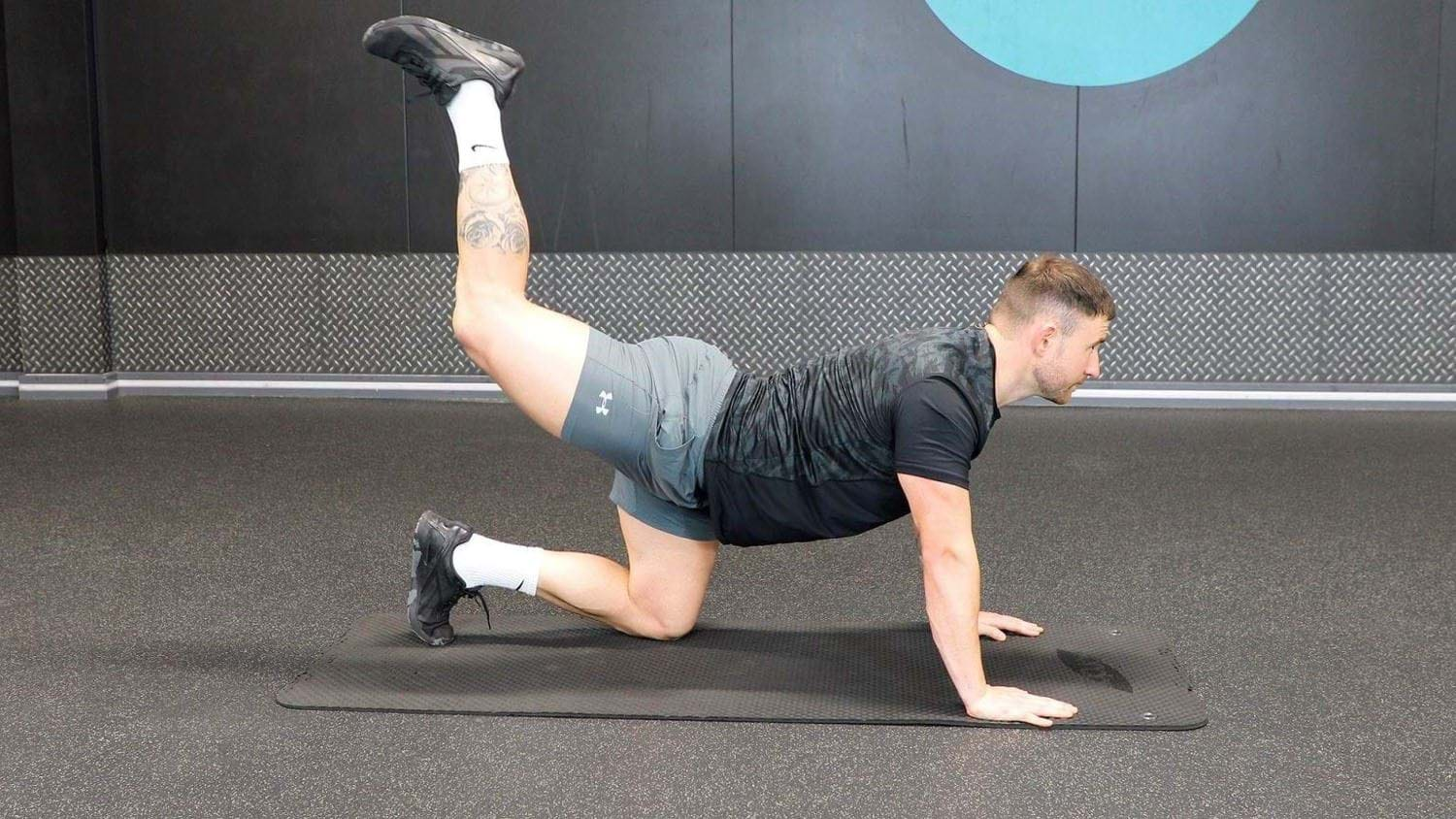Donkey Kicks
What Is A Donkey Kick?

The donkey kick is a bodyweight exercise that strengthens the glutes by training hip extension. This is a glute kickback variation that is performed kneeling on all fours with a bent leg. Donkey kicks work all three gluteal muscles (gluteus maximus, medius, and minimus), with the hamstrings also working to extend the hip while flexing the knee, and the core working to stabilise the spine.
Donkey kicks can be used to activate the glutes and stretch the hip flexors before a lower body workout, or performed as part of the main workout. If you sit for prolonged periods, performing donkey kicks 1-2x throughout the day can help to combat tight hip flexors and weak glutes. Regularly strengthening and engaging the glutes can also help to improve posture and reduce lower back pain.
You can use a resistance band to make donkey kicks more challenging. We show how to do this below.
Check out other glute kick variations: cable kickbacks, glute kickbacks.
Commonly Asked Questions On Donkey Kicks
Donkey kicks are an effective way to engage and strengthen the glutes. As you get stronger, you may need to progress to more challenging exercises to continue to build strength and grow the glutes, for example cable kickbacks or hip thrusts. You can also perform donkey kicks with a resistance band to increase the resistance
Donkey kicks are a good way to engage the glutes to build strength and endurance. Donkey kicks isolate the glutes so stronger muscles are not able to take over, as they might do in exercises like squats or deadlifts. Performing donkey kicks before your workout can help to engage the glutes and make them more active during other lifts.
As a strengthening exercise, donkey kicks do not burn many calories. These kind of exercises should used as a way to build strength and muscle rather than burn calories.
Donkey Kick Tips
Keeping a neutral spine helps to reduce pressure on the lower back as it forces the glutes to drive the movement, rather than the motion coming from arching the spine. Before you start, breathe out and contract the abdominals and tuck your pelvis towards your ribs. Aim to keep the back flat throughout, even if it means less range of motion for the kick.
How To Do Donkey Kicks
Start on your hands and knees, spine neutral, with your head facing the floor. Engage your core.
Kick back your right leg while keeping your knee bent at a 90 degree angle.
When your thigh is parallel with the floor and sole of your foot is facing the ceiling, squeeze your glutes and hold this position.
Slowly lower your leg back to the start, stopping before your knee reaches the floor.
Repeat for reps then switch legs.
How To Do Donkey Kicks With Resistance Bands
Start on your hands and knees, spine neutral, with your head facing the floor. Engage your core.
Kick back your right leg while keeping your knee bent at a 90 degree angle.
When your thigh is parallel with the floor and sole of your foot is facing the ceiling, squeeze your glutes and hold this position.
Slowly lower your leg back to the start, stopping before your knee reaches the floor.
Repeat for reps then switch legs.
If you’re not sure if any of the above exercises are suitable for you, please consult your doctor before you start it. Need guidance on how to perform the exercise? Ask a personal trainer at your gym.